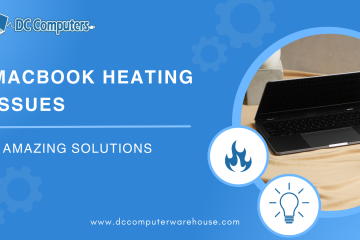Competition among companies has reached a new level which is mainly influenced by technological advancements. According to Gartner’s forecast, IT modernization will be among the main priorities for businesses in 2024 and this will lead to a $6.8 trillion investment in the transition to a digital world. As a result, a majority of companies are undergoing this process of scrutinizing their outdated systems and identifying what these modern cloud-based solutions would bring to the table. In this article, you’ll find that the catalyst for the paradigm shift lies in economic competition and the imperative to establish adaptable business entities cognizant of emerging technological trends.
Understanding the Limitations of Old Systems
Despite their persistence, the current systems have started to fail when measured against the high pace of the digital era. These older systems are not able to give the scalability that the organizations need to support their growth and hence, they face many problems such as performance issues and downtime. According to Gartner, maintaining an old system may cost companies twice as much as modern cloud-based solutions. Besides that, the fear of expensive on-site hardware and software could result in a limited budget and impede innovation. Similarly, like security concerns, outdated systems turn out to be vulnerable points during the regular application of patches and updates.
Benefits of Cloud Solutions
There are different ways in which cloud solutions are advantageous over on-premises systems, therefore giving companies determined to change their IT infrastructure a good operating option. Cloud-based solutions ensure scalability and flexibility, providing the possibility to increase capacity or decrease it without any new asset.
Cloud solution choices recommended by experts in the field, such as San Jose IT support, offer a smooth pathway for scaling up. This is because businesses only pay for the resources they actually utilize, eliminating the need for upfront investments in hardware and software. Upgraded security mechanisms, which comprise timely fixes and updates, data encryption, and the development of enhanced threat prevention and detection techniques, also facilitate businesses in building good resilience against cyber threats.
Addressing Common Concerns and Challenges
This is also the reason why the pros of cloud services are so evident; companies may still be worried and experience trouble when moving their operations to the cloud. Large amounts of data migration problems, like catching the data moving up to the cloud seamlessly without interrupting operations, can be a challenging operation. Integration problems can develop when connecting the cloud solutions with existing systems and processes. This necessitates good planning and coordination, making sure that the processes are well integrated. It would be very crucial to offer training as well as adoption strategies so that employees may get the skills and the knowledge required to make the most use of the cloud solutions in conducting their work.
The Key Takeaways
Eventually, the new system that finds its way to cloud platforms is going to be a real and desperate necessity for those businesses aiming to stay competitive in today’s digital world. Through adopting cloud technology, companies now have the advantages of higher scalability and flexibility, cost-efficiency, and bigger system security. Together with experts, businesses shall be able to effortlessly implement a move to a cloud solution and enjoy its advantages after the transition to modernized IT infrastructure.




